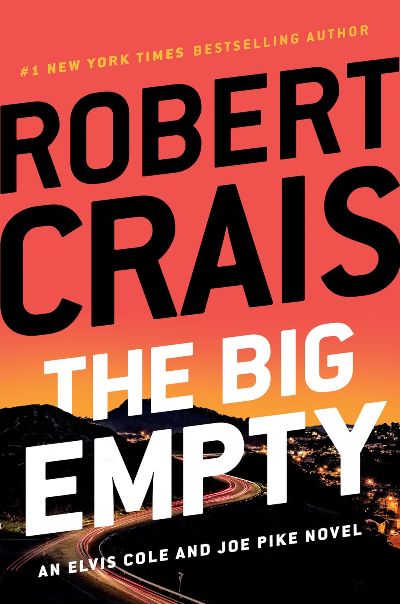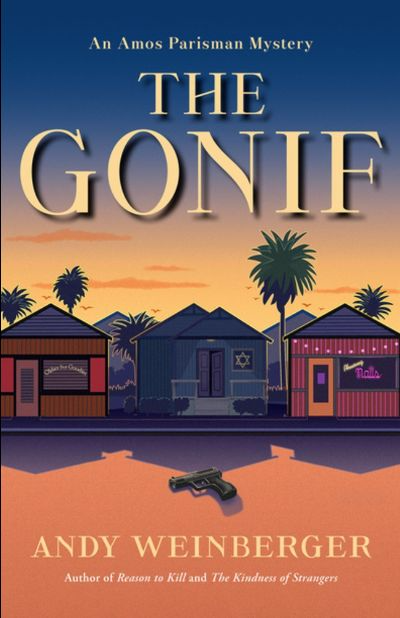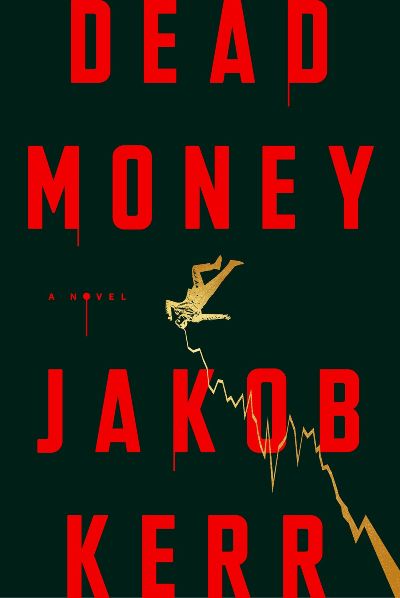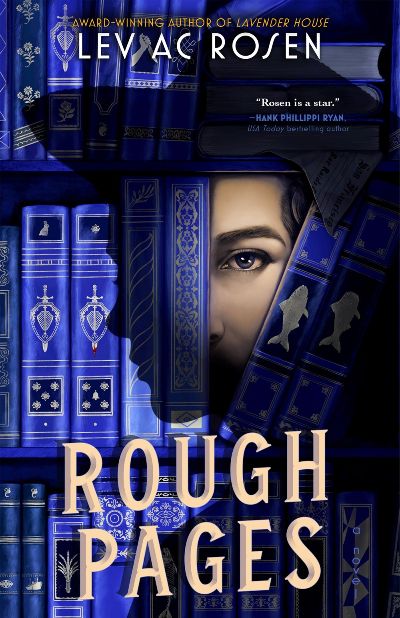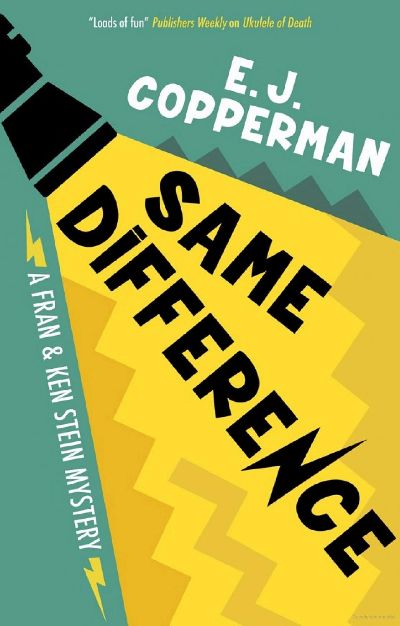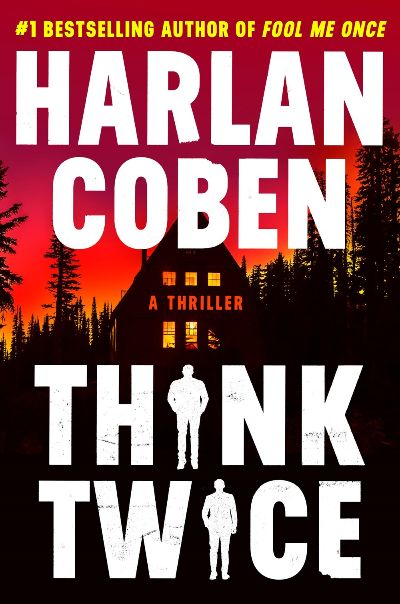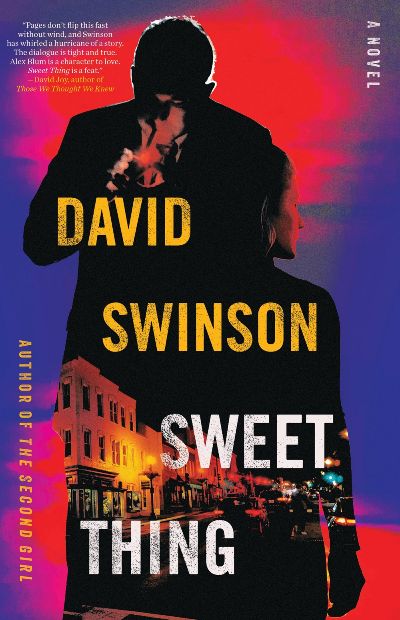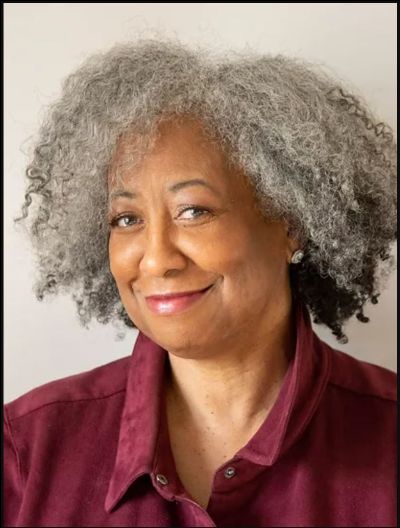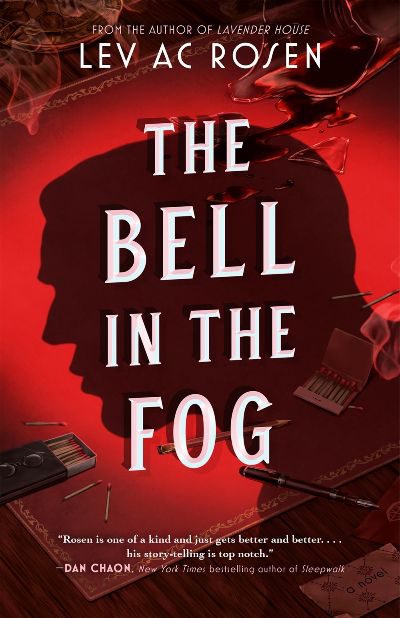Traci Beller is a popular influencer with millions of followers inspired by watching her bake. It’s been ten years since her father, Tommy, never returned home, with the local police attributing it to him abandoning his family. Now, Traci wants answers. She reaches out to the best detective to learn the truth, Elvis Cole. Elvis has his work cut out for him trying to track down someone missing for a decade, but he’s willing to give it a shot, though he’s doubtful he will uncover anything more than what the police could find. But the detective stumbles upon a mystery involving the last person who saw Tommy alive and refuses to talk about it. He starts seeing the same dark-colored vehicle following him and soon learns that people don’t want him to discover the truth and are willing to kill anyone to keep everything secret. This case started as a simple missing person case for Elvis, but becomes the one that could be his last. Crais masters compelling crime fiction by blending humor, terrific main characters, and suspense into a phenomenal package. Empty might be in the title, but this story is far from it.
Private Investigators
Work has been sparse for detective Amos Parisman. He’s getting older, while his wife, whose dementia has become more advanced, requires greater attention. So when he’s asked to take on a job protecting a rare Torah—it was smuggled out of a North African Jewish community during World War II and somehow made its way to a small, rundown Sephardic temple in Hollywood—Amos is quick to say yes. A small, easy job, what could go wrong? Just wait and see. A bit of a classic gumshoe and a bit of a luft-mensch, or dreamer, Amos brings on his usual cast of characters to help out, from former-wrestler Omar to cousin Shelly to LAPD Lieutenant Bill Malloy (the two guardedly share information.) It’s a delight to follow Amos as he rolls around Los Angeles County, following potential leads while immersing himself in the world of rare books. Weinberger never fails to deliver a novel that’s as rich in character as it is in environment. Save it for that weekend when you need to escape.
Dead money is slang for wealth that’s held up by a clause in a will, and after Elon Musk-type Trevor Canon is found dead in his San Francisco tech-bro office, investigator Mackenzie Clyde finds that he recently had just such an amendment inserted into his will. A lawyer who now works as a sort of fixer at a venture capital firm, Mackenzie isn’t the most likely candidate to help the FBI with their case, but she’s ambitious and jumps at the chance when her boss wants to know what happened. Investigating Trevor’s associates is much more complicated than it should be. She’s also subjected to more exposed ankles in mens suits than she’d like, not to mention corporate babble like one associate’s drive to “leverage the leader that lays dormant within clients…to manifest a corporate identity in ways they’ve never crystallized” (snort). The FBI agent she works with, a rich kid who bucks the stereotypes of his upbringing, is having none of it, and together the duo relentlessly digs to the center of a technical and political tangle. Get ready for some startling revelations along the way. Lawyer and debut author Kerr was one of the first employees at Airbnb, and his absorption of the BS is our gain.
The third volume in Rosen’s Evander Mills series is the most powerful to date, going deeper into the community “Andy” Mills has created for himself while taking on the power of secrecy in post-World War II San Francisco. Former cop, currently a PI—without the documentation—Andy is called upon in this book to locate Howard Salzberger, a queer bookseller who has a little brown book that documents all of his customers, and who has loose ties to Andy. Howard has a book he is planning to sell—perhaps about the Mafia?—when he suddenly disappears. While this is historical fiction, set in the ’50s, readers of Rough Pages will surely reflect on the harassment and persecution of librarians, teachers, and students who seek or make available LGBTQ content in present-day America.
It’s tempting with some books to say “just read it,” and the second in Copperman’s Fran and Ken Stein (get it?) series is that type of book: quite unbelievable but totally seductive. Twins Fran and Ken were created by two scientists who played around with the twins’ genetics; they’re super tall, super strong, and a bit superhero-like. Their parents had to skip town when the two were babies, leaving them in the hands of a trusted friend. Today, the twins are all grown up and run their own Manhattan detective agency; in this episode, they are hired to track down a young trans woman, Eliza, who has disappeared, and who very much may not want to be found. The search for Eliza takes the duo through most of the City’s boroughs, entangles them in a handful of characters, and presents a plot that keeps growing more and more complex. But it’s the personal lives of the siblings that interest me the most, such as Fran’s on-again, off-again relationship with an NYPD detective and the rare communication she has with their parents. Will they ever be reunited?
Sports agent and former attorney Myron Bolitar works closely with his best friend, Win, in a lavish office in New York City. FBI agents visit one day and demand answers. One of Myron’s former clients, Greg Downing, is the prime suspect in a couple of murders, as his DNA was found under a victim’s fingernails. The only problem? Greg died three years ago, and Myron last saw him at his funeral. Myron and Greg had a history, and being curious how a dead man could murder someone, Myron asks Win for help, and they start digging for answers. Mobsters, false identities, and a string of murders committed by innocent people are only the tip of the iceberg in Coben’s latest. Myron and Win’s stories are personal favorites, and their relationship, banter, and puzzle-solving skills make for a great series. Think Twice is a classic story with a favorite duo and another great Coben thriller full of surprises and misdirection. Here’s hoping we meet these partners in action again soon.
Washington, DC homicide detective Alex Blum is an in-between sort of cop. He’s not jaded, but he’s used to the horror he sees on the job. He knows that, unsexy as it is, procedure gets things done, although he can cut corners when it suits. But after he’s called to a murder scene and finds that the dead man, Chris Doyle, knew one of Blum’s informants, Artie Holland, Blum throws procedure and even personal beliefs to the wind. The informant is missing—in his world as a drug dealer, probably dead, but we’ll see—but his girlfriend, Celeste, is still in his home. She and Blum take up a dangerous relationship, one that must be hidden from both his job and Artie’s cohort, who wouldn’t like a cop taking Artie’s place. Swinson’s dialog is a highlight here. The characters, from the medical examiner and cops to desperate Celeste and the dancers at a topless bar—one of Artie’s haunts—all talk us through seedy and horrible events while the rumored Y2K disaster looms and Blum edges further toward his own destruction. Swinson’s unusual ending tops the surprises in this rough, realistic noir.
George Pelecanos is such a wonderful writer—word by word, sentence by sentence, paragraph by paragraph—that you can finish any of these stories only to wonder: how did I get here so fast? In these four novellas, Pelecanos mines familiar territory—Washington D.C. and Baltimore—areas he has explored in his 20-plus novels and as a film and television producer and writer who has worked on the HBO series The Wire, Treme, and more. In the first story, “The Amusement Machine,” two men—one white, Ira; and one Black, Jerrod—meet at a book group in jail and form a tentative friendship that extends beyond prison. Until a foolhardy act on Ira’s part, which nearly implicates Jerrod, seemingly destroys whatever relationship they might have. In “The No-Knock,” a family’s home is invaded by the police operating under a no-knock warrant, which allows the cops to force entry without identifying themselves. They are seeking one of the teenage sons, Vince, who eventually turns himself in, guilty of robbing a marijuana dealer. But while the son never again engages in criminal activities, the violence and disruption of the home invasion is something the father can never get past, with it haunting him for the rest of his life. Novellas are great for book groups, especially today when people are often intimidated by a 300-page novel, but crime fiction offers few novella choices. This collection is one of the very best.
This new title from Delia Pitts—author of the Ross Agency series—offers everything that fans of detective fiction are looking for. Vandy Myrick, a former cop—she joined the force to impress her cop dad—is now a detective in Queenstown, New Jersey, her hometown, where she sets up a firm with BFF and trial lawyer Elissa. They’re two Black women in a town where racism, “casual like flip flops down the Jersey shore,” is always bubbling right under the surface. Vandy’s work is mainly divorce cases, and when she gets a call from the Mayor’s nephew—Queenstown royalty—asking her to track his wife, she just assumes that one more “Q-Town” marriage has hit the rocks. Except this gig quickly spins out of control when Vandy walks in on a double homicide, one that the powers that be are all too eager to shut down. Pitts has written a strong narrative that ricochets from Vandy’s tragic past to her gutsy present, keeping readers totally engaged to the very last page…and eager for more. Fans of Robyn Gigl’s thrillers will enjoy visiting New Jersey with Vandy.
What the world needs now is a great, queer detective, and Rosen is well on his way to creating him. The second in the series—the first was fun but also a bit idiosyncratic—this has the makings of a classic detective novel with a strong supporting cast. It’s San Francisco in 1952, and we’re back with struggling detective Andy Mills, whose home and office are above Ruby, a gay bar. Ex-navy and an ex-cop, Mills is still struggling to gain acceptance from the queer community. But along comes a case that may help him turn around his image. First one, then several people, it turns out, are being blackmailed—sex photos taken in a hotel, holes drilled through the wall—and Mills is on the case. But as with any good crime novel, the story isn’t what you first expect, and soon Andy is reunited with his Navy flame who disappeared seven years ago. Set against the queer bars of the city, the continual raids orchestrated by the police, and the foggy bay itself, this book is powerfully atmospheric. It ends leaving Andy free from the past and ready for the future. Exactly what most readers will be waiting for.

